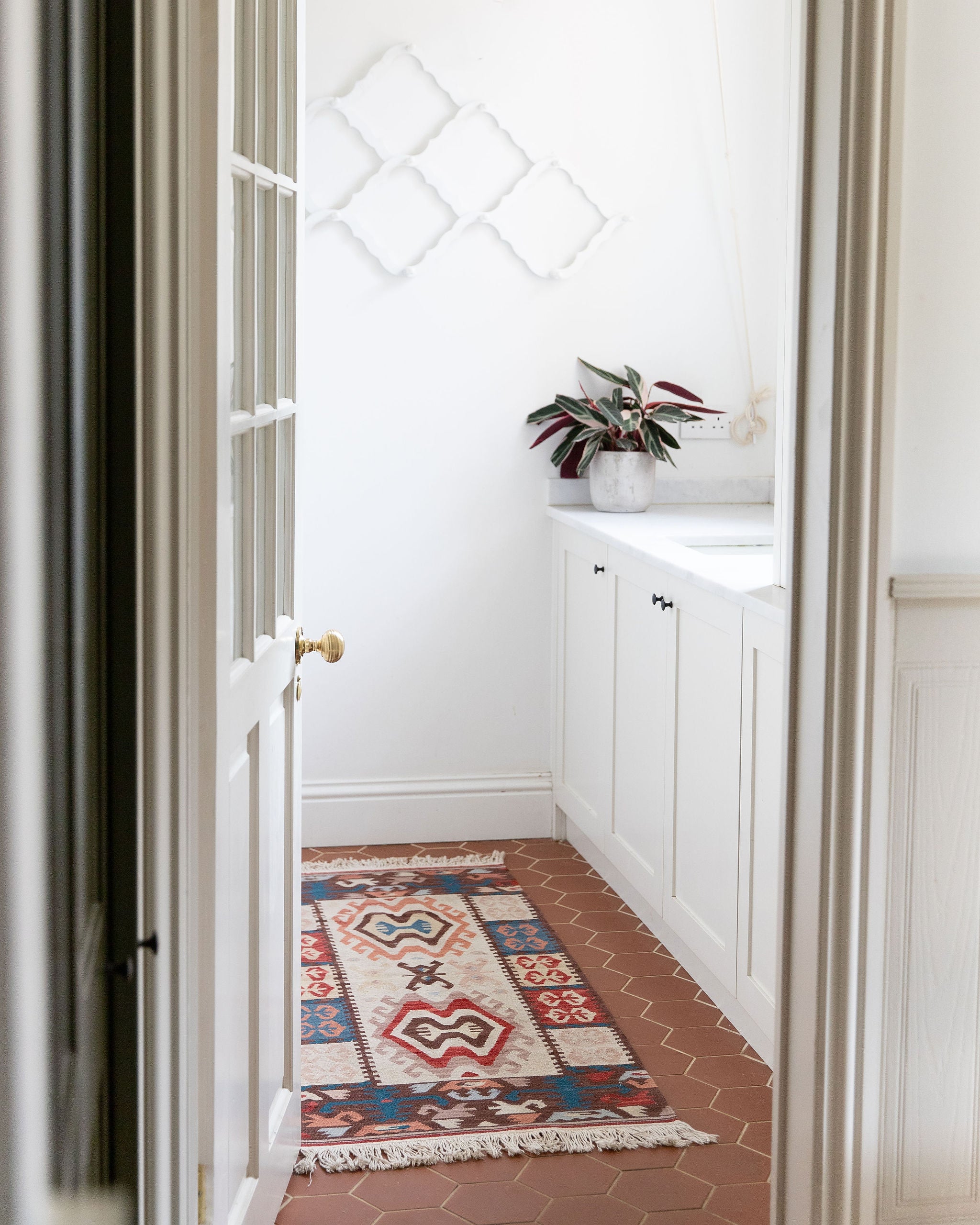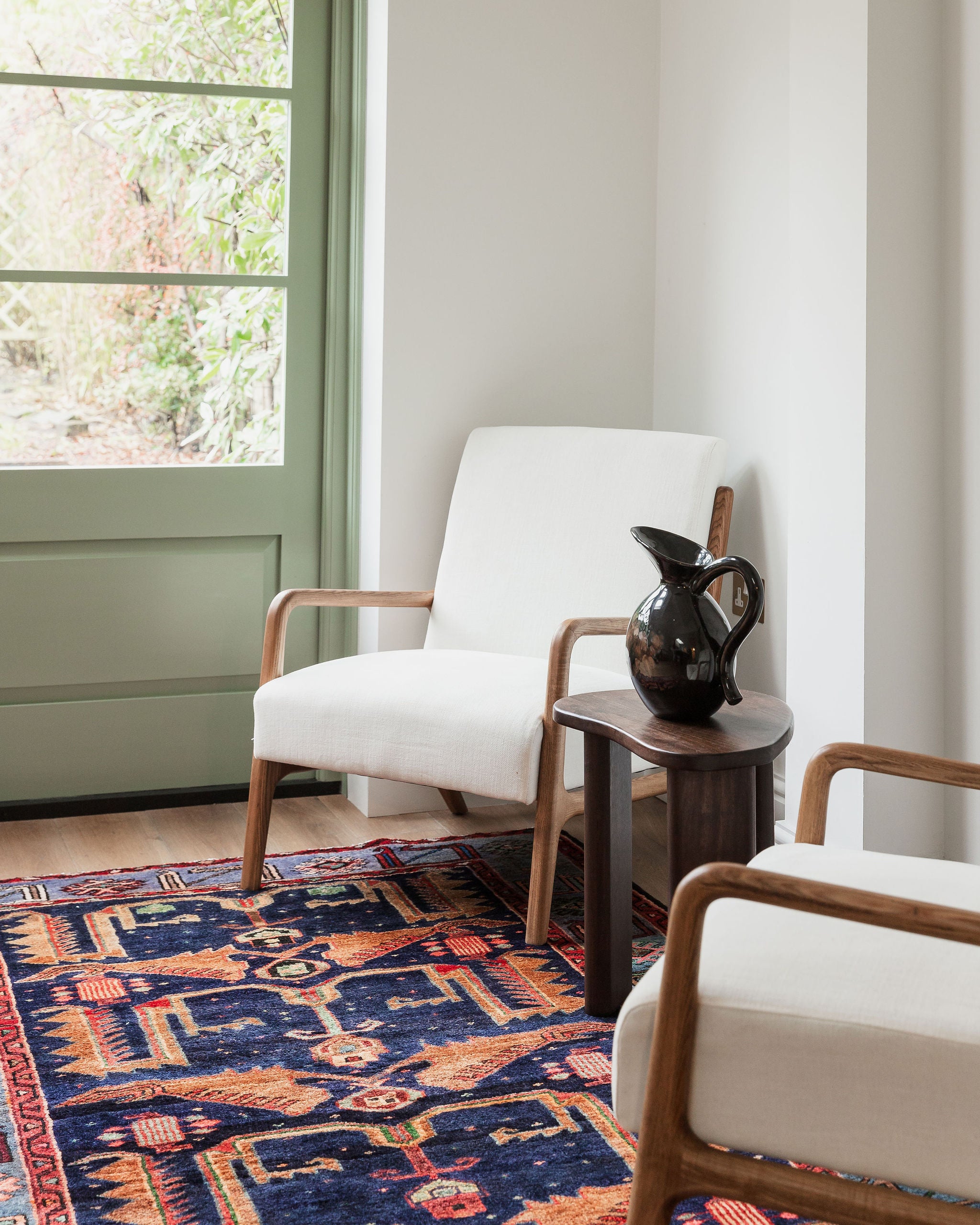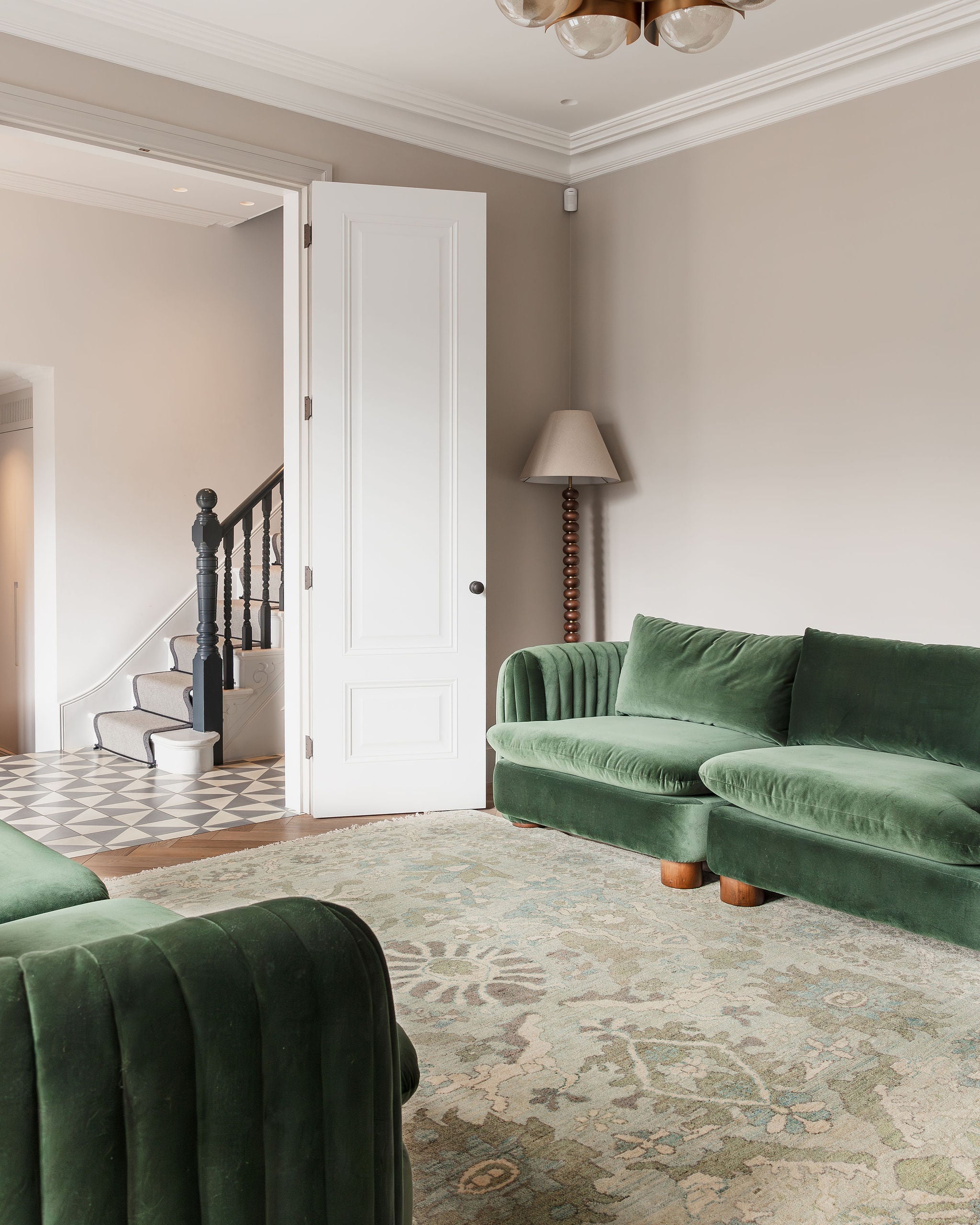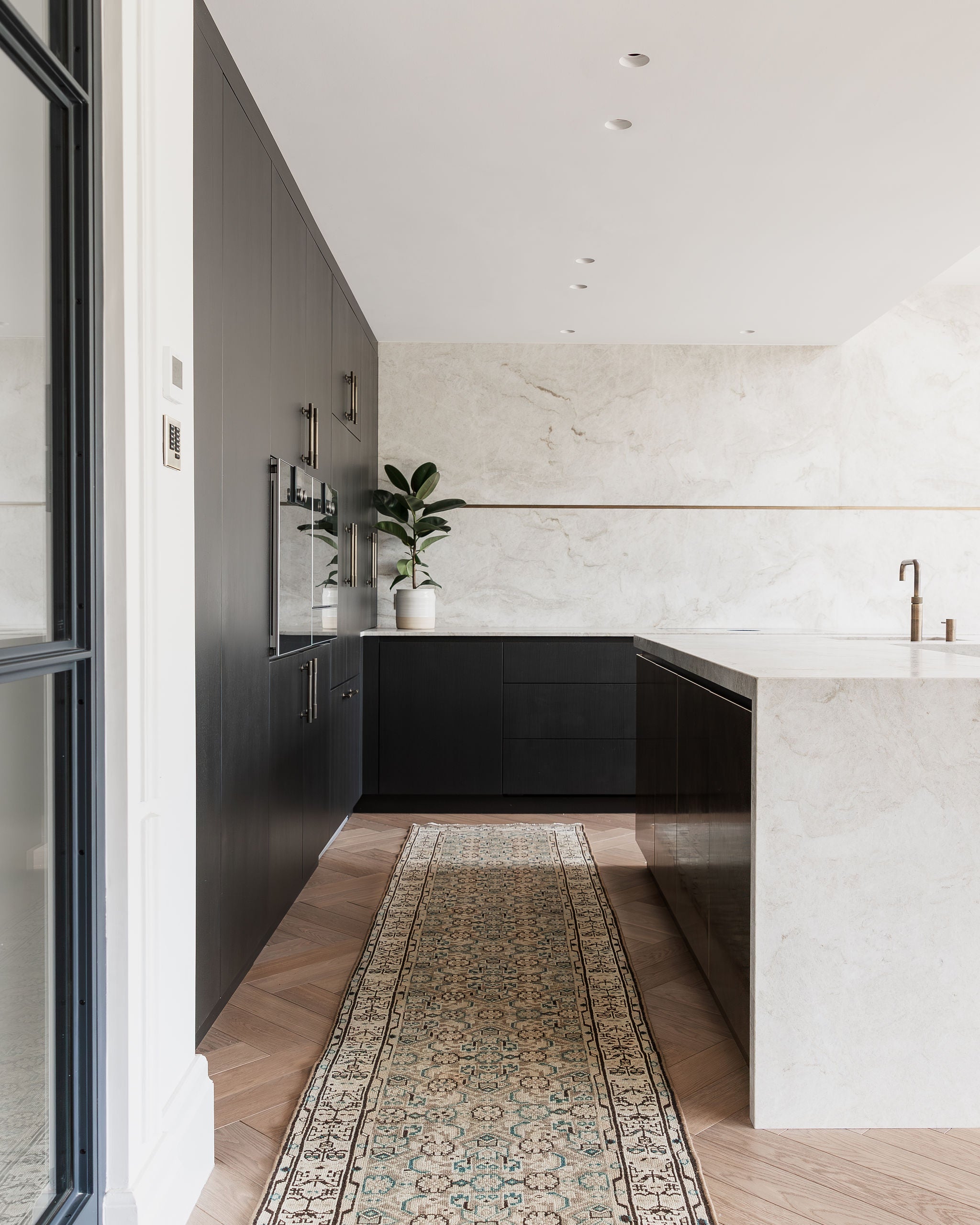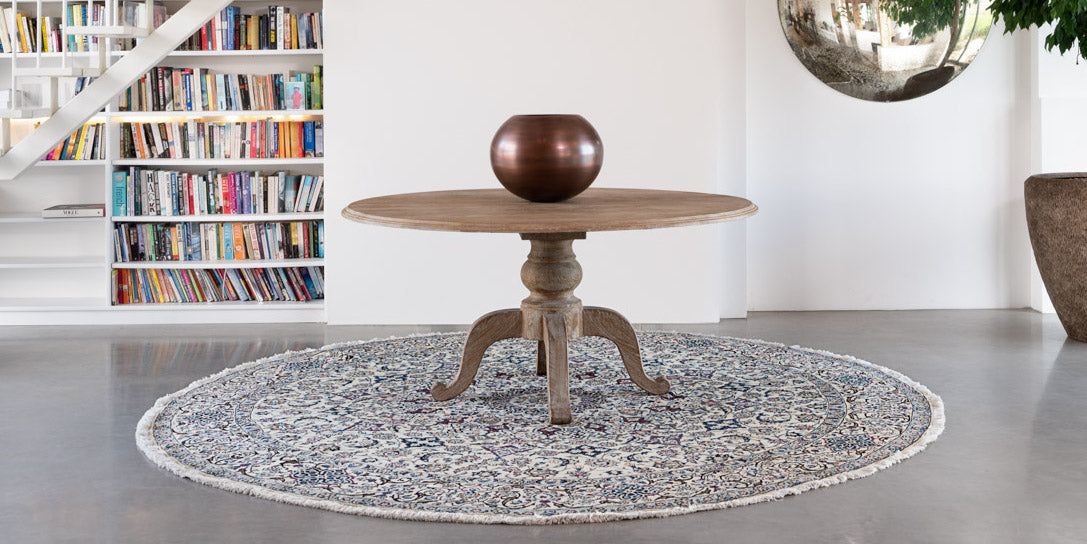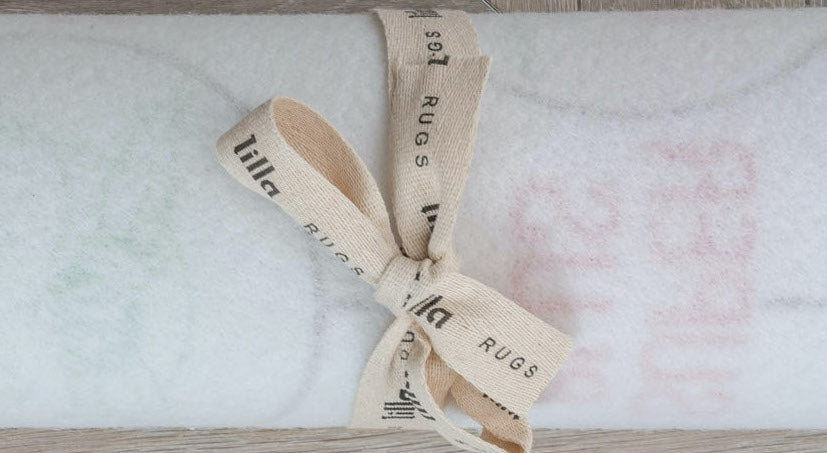Rug Materials 101: Wool, Silk, and Cotton Explained
When it comes to handmade rugs, the material plays a crucial role in determining the rug’s look, feel, durability, and value. Understanding the characteristics of various materials can help you choose the perfect rug that fits your lifestyle and enhances your living space. Here, we’ll explore three of the most popular materials used in handmade rugs—wool, silk, and cotton—and how each one contributes to the unique beauty and functionality of these pieces of art. It's important to note that by opting for a handmade rug, you are steering away from the synthetic materials, and in doing so have already chosen the most durable rug you can.
1. Wool Rugs: The Perfect Blend of Comfort and Durability
Wool is by far the most popular material for handmade rugs, valued for its resilience, softness, and natural warmth. It’s been used for centuries by master weavers around the world and remains a favourite for both traditional and modern designs. It is usually the material that makes up majority of the pile of the rug.
Key Characteristics:
- Durability: Wool is incredibly strong and can withstand high foot traffic, making it ideal for living rooms, hallways, and areas that see frequent use.
- Stain Resistance: Thanks to its natural lanolin coating, wool has a high resistance to stains and soiling. This makes it relatively easy to clean and maintain.
- Softness & Warmth: Wool fibres have a natural crimp, giving them a plush feel underfoot and excellent insulation properties.
- Colour Vibrancy: Wool absorbs dyes beautifully, resulting in vivid colours and rich patterns that last for generations.
Best Use:
Wool rugs are versatile and work well in any part of the home. They are especially suitable for high-traffic areas, as they maintain their shape and colour even with constant use.

2. Silk Rugs: The Epitome of Elegance and Luxury
Silk is synonymous with luxury and sophistication. It’s often used in high-end handmade rugs, either on its own or blended with other fibres like wool and cotton. Because of its fine texture and light-reflecting qualities, silk creates intricate, shimmering designs that stand out.
Key Characteristics:
- Sheen & Luster: Silk rugs have a natural sheen that catches light, giving the rug an elegant, almost luminous appearance.
- Intricate Designs: The thin, delicate nature of silk fibres allows weavers to create highly detailed and complex patterns, resulting in exquisite artwork on the rug’s surface.
- Softness: Silk is incredibly soft and smooth, adding a luxurious touch to any room.
- Surprisingly Durable: Whilst silk could be more suitable for low-traffic areas due to its intricacy, it is actually an incredibly strong material. You have to burn silk to break it, so the foundation remains the strongest of all the materials.
Best Use:
Silk rugs are ideal for bedrooms, formal living rooms, or as statement pieces in low-traffic spaces. They can also be used as wall hangings or art pieces to showcase their intricate beauty.

3. Cotton Rugs: Versatile and Easy to Maintain
Cotton is often used as a foundation material in handmade rugs, but it can also be used as the main material for lightweight and flatweave designs. While less luxurious than wool or silk, cotton brings its own set of benefits that make it a practical choice for many homes.
Key Characteristics:
- Affordability: Cotton is generally more affordable than wool and silk, making it a budget-friendly option for those looking for handmade quality.
- Lightweight & Versatile: Cotton rugs are lightweight and easy to move, perfect for seasonal changes or when redecorating.
- Easy to Clean: Cotton is straightforward to clean, making it ideal for areas where spills and messes are more common, such as kitchens or kids’ rooms.
- Texture & Look: Cotton has a smooth, casual appearance that works well in informal settings.
Best Use:
Cotton rugs are perfect for kitchens, playrooms, or as accent pieces. Because they are less durable than wool, they are best placed in low-to-medium traffic areas.
Choosing the Right Material for Your Rug
When selecting a handmade rug, consider not just aesthetics but also the material’s characteristics and how they fit into your lifestyle. Here’s a quick guide:
- For High-Traffic Areas: Opt for a wool rug due to its durability and stain resistance.
- For Luxurious Spaces: Choose a silk rug to add elegance and sophistication to low-traffic rooms.
- For Casual Settings: Pick a cotton rug for a lightweight, easy-to-maintain option that fits well in laid-back spaces.
Mixing Materials: Best of Both Worlds
Some of the most stunning handmade rugs are crafted using a combination of these materials. For example, wool and silk rugs combine the durability of wool with the sheen of silk, resulting in a piece that is both practical and eye-catching. Cotton is often used in the warp and weft (the foundation threads) of rugs to add strength and flexibility, even in pieces where wool or silk is the primary surface material.

Understanding Your Rug Material
The material of a handmade rug is more than just a functional choice—it’s an expression of artistry and tradition. Whether you choose the classic durability of wool, the luxurious softness of silk, or the easygoing charm of cotton, knowing the benefits of each material will help you select a rug that complements your home and stands the test of time.
Do you have questions about choosing the right rug material for your space? Get in touch with our team to find the perfect handmade rug that suits your style and needs.


